 The Zeiss Distagon 21mm f/2.8 is a beastly all-metal, high-performance manual-focus super-wide lens available for most SLRs, digital and film.
The Zeiss Distagon 21mm f/2.8 is a beastly all-metal, high-performance manual-focus super-wide lens available for most SLRs, digital and film.This Zeiss is not your father's 21mm f/2.8. This gigantic Zeiss weighs almost three times what Nikon's 20mm f/2.8 AI-s does. It's not much smaller than the huge Zeiss Distagon 35mm f/3.5 ultrawide for the medium format Contax 645.
Nikon 20mm f/2.8 AI-s and Zeiss 21mm f/2.8. enlarge.
This Zeiss 21mm is the biggest, heaviest, most optically complex and closest focusing 20mm or 21mm lens to grace this planet. It also has the least distortion of any 21mm SLR lens I've ever used.
It is the highest-performance 21mm SLR lens I've ever evaluated. It is also the only 21mm lens I've ever used that cheerfully can use two stacked filters without vignetting on full-frame 24x36mm.
This is a full-frame (Barnack 24x36mm) lens and I will review it as such. It is a waste to use this lens on any format other than full-frame.
It has performance better than Canon's ultra-wide zooms, making it worth serious consideration for shooting nature and landscapes with Canon.
This Zeiss lens costs and weighs about the same as Nikon's and Canon's zooms. Your trade-off for better optics is manual focus (only) and no zooming. Hint: for serious photography where things hold still, you don't need a zoom, and if things are holding still, the precise manual-focus mount gives more consistent results compared to floppy autofocus mechanics of the other lenses. I'd skip this for sports and action, and give it a long, hard look for nature and landscapes on Canon.
Also have a look at Zeiss' newer Zeiss Distagon 18mm f/3.5, which is smaller, lighter, wider, less expensive and 95% as good optically.
Unlike Canon, Nikon has made many versions of fixed 20mm lenses that work on its cameras, both manual and auto focus. I have not compared their performance against this Zeiss lens, however Nikon's newest 20mm fixed lenses were designed back in the 1980s and have lower performance than Nikon's current 14-24mm AF-S.
Compatibility top
Canon
On Canon, Zeiss actually worked with Canon to ensure everything works properly.
On digital, focus confirmation lights work great, as does auto exposure and EXIF data.
I tried this ZE lens on Canon's very first EOS 620 from 1987 and the newest 5D Mark II from 2008. It worked perfectly on both of them, so I foresee no problems with any Canon EOS, from your A2E to your Rebel G to your digital cameras.
Nikon
In English, the CPU lens works perfectly with your D700, so long as you don't mind focusing manually. The non-CPU lens asks that you enter the data in the D700's non-CPU lens data menu, and then works great in only manual and A exposure modes.
The non-CPU ZF lens performs the same as a Nikon AI-s lens. I have not confirmed that it has the correct rear lugs to give full matrix metering with the FA and F4.
Thus it is compatible as listed under AI,AI-s (or AI converted if it lacks the secret maximum aperture coupling lug) at Nikon Lens Compatibility.
The CPU ZF.2 lens is as compatible as an AF lens at Nikon Lens Compatibility.
This Zeiss lens is perfectly compatible with older non-AI Nikons made from 1959-1976, since it has a coupling prong, something Nikon removed from its AF lenses back in 1986 to save money.
Pentax
I have no idea. I haven't tried.
Short of shooting this on a Pentax ME, does Pentax make any full-frame cameras today anyway?
Specifications top
Intro Specs Performance Compared Recommendations
Zeiss 21mm f/2.8 ZE. enlarge.
Name
Zeiss calls this the Carl Zeiss Distagon T* 2,8/21.
The Canon EOS EF mount shown in this review is suffixed "ZE."
The Nikon AI-s mount is suffixed "ZF."
The Nikon AI-s mount with CPU is suffixed "ZF.2."
The Pentax K mount is suffixed "ZK."
Distagon is Zeiss' trademark for wide-angle retrofocus lens. All wide-angle 21mm SLR lenses are retrofocus, thus the use of this trademark is meaningless, except that it sounds impressive.
Optics top
Schematic, Zeiss 21mm f/2.8.
16 elements in 13 groups. This is the most complex 21mm lens of which I know.
Multicoated, for which Zeiss uses its trademark "T*."
Rear focusing. Nothing except the focus ring moves externally.
Zeiss 21mm f/2.8 at f/2.8. enlarge.
Diaphragm
9 blades.
Stops down to f/22.
Close Focus
8.7 inches (0.22m) from the image plane, which is almost right on top of the front element.
Maximum Reproduction Ratio
1:5.
You can't get closer with any other 21mm lens (full-frame image).
It's sharp, too this close. Here's a crop from a 100% image, meaning this is what you'd see if you blew this up to about 40x60" (1 x 1.5 meters):
Edge of Rockwell's watch; all hand-held at f/8 and 1/250.
Size top
3.4" (87mm) extension from flange, 3.448" (87.59mm) diameter.
82mm filter thread. Does not rotate.
Weight top
25.407 oz. (720.25g), as measured by me, Canon version.
Zeiss euphemistically specifies 600g, which isn't happening.
Introduced
2008.
Scope of Delivery
Includes lens, metal hood, caps, and impressive paperwork. Zee Germans are big into zee papers.
Box, Zeiss 21mm f/2.8 ZE.
Price
$1,540, USA, December 2009, in Canon mount (ZE).
$1,490, USA, December 2009, in Nikon (ZF) or for Pentax K mount (ZK), no CPUs.
$1,732, USA, December, 2009, in Nikon CPU mount (ZF.2).
Performance top
Intro Specs Performance Compared Recommendations
Overall Focus Cold Weather Color Data
Diaphragm Distortion Ergonomics Falloff Filters
Ghosts Hood Lateral Color Fringes Mechanics
Peripheral Color Sharpness Sunstars
Overall performance top
This Zeiss performs as we'd expect from Zeiss, who also makes planetarium projectors, lenses for spy satellites that can read newspapers from space, lenses that Hollywood uses to shoot its highest-budget movies and lenses for submicroscopic semiconductor wafer fabrication. Microscopes? Zeiss has been shipping those for over 150 years. Man's walk on the moon? Zeiss lenses again.
Nikon only started making cameras in the 1940s.
Canon started making cameras in the 1930s, which were merely cheap copies of the LEICA.
Leica started selling cameras and lenses in the 1920s.
Zeiss has been dominating the high-performance camera lens market since the 1800s!
Zeiss' Anastigmat was designed in 1890 by Dr. Paul Rudolph, and it was the lens copied 25 years later by Dr. Max Berek as the first lens for the LEICA.
Dr. Paul Rudolph's Zeiss Planar, a double-Gauss design on which most modern fixed normal lenses are still based, came out in 1896. Over a hundred years old, and it's still what the Japanese are selling today as their latest normal lenses.
Dr. Paul Rudolph's Tessar came out in 1902, and is still the basis of simple 4-element, 3 group normal lens designs.
So Zeiss knows a thing or two about optics and has been selling excellent camera lenses a century before Nikon, Canon and LEICA wandered into it. Heck, Zeiss invented most of it.
I don't feel worthy to "evaluate" a Zeiss lens, because, yes, Zeiss makes the MTF and other test equipment everyone else uses to test their own lenses.
That said, this is a very good lens, possibly the best there is, within the limits of my ability to test and compare intelligently across camera brands.
Focus performance top
Focus is manual-only.
The focus ring is more heavily damped than Nikon, so it won't flick end-to-end as will a Nikon, but you can easily focus precisely with just one finger tip.
It is wonderful. Cradle the lens in your left hand, and you expression finger can move the focus at the same time.
Since the barrel is solid and does not move in and out as do most manual focus lenses, nothing hangs up. The focus ring moves on its own as you solidly hold the rest of the lens.
Canon
On Canon, hold the shutter halfway as you focus.
Look for the AF sensors to blink as you pass the point of perfect focus. Only the dot on the bottom of the finder will stay lit so long as you are in focus.
On older EOS cameras, look for the dot on the bottom of the finder as you hold the shutter. Their AF sensors may not light.
No big deal, see your manual, and with this lens, you never have to move a switch to manual focus.
Nikon
Use your split-image and microprisms as always.
On AF or digital cameras, look for the in-focus dot (or dots) lit up in the finder. Nikon's AF cameras are way behind Canon's for manual focus: Nikon's AF sensors never light in manual focus modes, so you have to look away from the images to the sides to look for Nikon's OK dots.
Cold Weather performance top
This lens is all metal. Not mostly metal with plastic this or that; it's all metal.
If your friends suggest that Zeiss lenses taste like licorice while you're out shooting in freezing weather, wait until you get back indoors and it warms up to try tasting it.
Color Balance performance top
The color rendition seems a tad warmer and greener than the Canon 16-35mm II.
No big deal, you can tweak your WB trims if you like.
Canon 16-35mm L II vs. Zeiss 21mm f/2.8 color balance, f/8.
Roll mouse over to compare. Reference: Canon 16-35mm L II.
© 2009 KenRockwell.com. All rights reserved.
These two shots exaggerate the difference. I shot the 5D Mark II in my usual setting of +3 saturation. To shoot these, I set a manual WB reference to the Canon 16-35mm L II shot, forcing it to gray. You will see peripheral color shifts in both these lenses.
Data performance top
This Canon-version makes files whose EXIF correctly reads the shooting aperture, and reads "21mm" for lens.
On Canon, from 1980s film EOS to today's digitals, everything seems to work perfectly.
Diaphragm performance top
The diaphragm of this Canon version is much nicer than I'm used to seeing in SLR lenses.
Not only is it a perfect 9 blades, a point of note that most users will never notice is that it is always symmetrical and never out of round.
Other SLR lenses have diaphragms which give the correct exposure, but because of the precision and speed at which these have to operate, usually have some blades that don't quite close the same as others, leading to slightly lopsided openings.
It doesn't matter, but it is a mark of quality that on the version I tried, apertures were always completely symmetrical when stopped down.
Even Zeiss' Contax 645 medium format SLR lenses, which cost several times what these 35mm lenses cost, have uniformly ununiform diaphragm openings.
Distortion performance top
If you run a straight line across the top of your image, it will "pull out" a bit in the corners. It's better than Zeiss' 18mm f/3.5.
This is complex pincushion distortion.
You can try -0.5 in Photoshop's lens distortion filter, however it leaves some waviness.
For perfect correction, you'll have to pray for a DxO module, or shoot Zeiss' 21mm f/4.5 rangefinder lens on your LEICA, or Zeiss' 21mm f/2.8 on your Contax G2 instead.
Ergonomics performance top
Zeiss 21/2.8 ZE. enlarge.
Unlike today's plastic pro zooms, this is all-metal. If you're used to plopping your Nikon and Canon plastic beauties down on your glass table or desktop, back off — you need to be careful with these heavy metal Zeiss lenses.
It is very dense, so I fear that it will be easier to slip out of my hands when mounting and unmounting. The focus ridges all run parallel, with no waffle pattern to stop it slipping axially out of your hand. This 21mm lens is as slippery as snake guts: be careful!
This chunky beast reminds me of the Zeiss 35mm f/3.5 lens for the Contax 645, just a little smaller in scale.
The red footage engravings are not very visible in use. They stand out a lot more in these photos than they do in reality.
The EOS mount has no red index dot on the outside, as do Canon lenses. You have to look for the red dot on the back of the mount, which is much less visible.
There is no "21" engraved on the side. You have to just know, or look at the front of the lens with no cap.
Falloff (darkened corners) performance top
All superwides have a lot of falloff. They get dark in the corners, especially at larger apertures. That's what they do, regardless of brand.
On Canon, there is no profile available for automatic peripheral illumination correction, as there is for most Canon lenses. Therefore, you'll have to correct this manually if it bothers you. If you do a direct comparison between the Canon 16-35mm II and this Zeiss 21mm on the 5D Mark II, you'll see a big difference, because the 5D II is correcting the 16-35's falloff, but not the Zeiss.'
I've greatly exaggerated the falloff of the Zeiss 21mm f/2.8 below by shooting a gray field and presenting it on a gray field. These examples are in monochrome.
Zeiss 21mm f/2.8 falloff on 24x36mm at infinity. f/2.8 f/4
f/5.6 f/8
© 2009 KenRockwell.com. All rights reserved.
Just like with other 21mm lenses, the falloff is quite visible at f/2.8, and is gone by f/5.6.
Photographers use this for deliberate artistic effect. Shooting at large apertures will emphasize your central subject, and exaggerate the wide angle effect.
At large apertures, this falloff leads to darker images I prefer, on the 5D Mark II, to add a little more exposure if I'm shooting wide open. There aren't any secrets here; just look at your LCD.
This 21mm has less falloff than the Zeiss 18mm f/3.5, which is to be expected because this 21mm is less wide.
Filters, Use with performance top
The filter ring never rotates. It doesn't even move in or out with the Zeiss' rear focusing.
The 82mm filter size in generous. There is no problem with vignetting on the full 24x36mm frame, even with a Tiffen HT Grad ND 0.6 in rotating mount (5.6mm ring thickness excluding threads).
In fact, there is no vignetting even with this TIffen grad and a stacked regular filter, for a total thickness of 11.6mm, excluding threads. This is pushing it; any more and vignetting would start.
This is excellent. This is the only 21mm lens of which I know on which two filters can be used simultaneously. This is great because it's not uncommon that I need a grad ND along with a warming filter on RealRaw, which I can't do on other 21mm lenses.
This is better than the excellent Zeiss18mm, which has a little vignetting with the same two filters.
Don't bother with polarizers on ultrawide lenses. The sky doesn't cooperate.
Ghosts performance top
Ghosts are minimal.
Go ahead, put the sun in your image. If you want ghosts, you're going to have to add them with a filter in photoshop.
Hood performance top
Zeiss 21mm f/2.8 and included metal hood. enlarge.
The excellent metal hood is included.
It's the same hood as the Zeiss 18mm f/3.5.
It locks on better than any of the flimsy plastic hoods that are good enough for Nikon and Canon. You have to push the Zeiss hood straight towards the camera to lock and unlock its rotation in the bayonet tracks.
This hood isn't going to pop off. If you beat something with it, you're going to have a bent hood still attached.
Lateral Color Fringes performance top
There are no lateral color fringes on Canon 5D Mark II.
This is much better than Canon's own zooms, and even better than the Zeiss 18mm f/3.5.
Mechanics and Construction Performance top
Rear, Zeiss 21mm f/2.8 ZE. enlarge.
This is a tough lens. Don't mess with it. It's easy to drop, and if you do, it's your toe that's going to be broken, not this lens.
Hood: Anodized aluminum, spring-loaded locking bayonet.
Filter Threads and Hood Bayonet Receiver: Chromed metal.
Barrel Exterior: Anodized aluminum.
Focus Ring: Anodized aluminum.
Focus Helicoids: Could be brass.
Depth-of-Field Scale: Yes.
Internals: Metal.
Mount: Dull-chromed brass.
Markings: Engraved and filled with paint, as God Himself intended.
Identity: Engraved around front of lens.
Serial Number: Engraved on front ring.
Ass-Gasket (dust seal at mount): No.
Noises When Shaken: Just a little clicking, in Canon mount. You're more likely to accidentally throw it while shaking it than you are to hear anything significant rattling, at least in Canon EF mount.
Made in: Japan. Tough. You want Made in Germany? That would cost $5,700 for exactly the same lens.
Weaknesses: Potentially slippery metal, easy to drop, and your hands will stick to it in freezing weather.
Peripheral Color Shift performance top
Most 21mm and wider lenses get cooler in the corners because their coatings become less effective at longer wavelengths as angles of incidence deviate from normal (90º).
This Zeiss is better than most. Most of the color shift I see is due to the rear nodal point being in less than the perfect position for the sensor of the 5D Mark II, which is what leads to the color shift from left to right.
This isn't in the lens; it's in how the 5D Mark II responds to light coming out the back of this lens. In RealRaw, I wouldn't see anything amiss.
Peripheral color shift is the same from left to right; it varies only with distance away from the center. What we see here is a magenta-green shift from left to right, caused by the optical interface to the sensor.
I'm exaggerating this below by shooting a gray field at f/8 and then presenting it against another gray field I forced the camera's white balance to neutral in the center, and shot the 5D Mark II in my usual setting of +3 saturation.
Zeiss 21mm f/2.8 peripheral color shift, f/8.
© 2009 KenRockwell.com. All rights reserved.
This is not visible in actual photographs, and is excellent performance.
Sharpness performance top
Of course it's sharp. It's a $1,500 Zeiss prime lens. What were you expecting, Sigma?
I love to slam expensive gear that doesn't measure up, but in this case, this lens is the real deal.
It's sharp all over. If it's not sharp, its because you're not doing something right.
Even the sides and corners stay sharp wide open, which is a little bit better than the smaller and less expensive, and still excellent, Zeiss 18mm f/3.5.
This Zeiss lens is worlds better than Canon's zooms. Then again, lens sharpness doesn't mean much to good photographers.
See examples at Compared to Nikon and Canon's ultrawides. Stopped down, Canon's zooms are close.
Sunstars performance top
The unusually symmetrical 9-bladed diaphragm begets beautifully symmetrical 18-pointed sunstars.
Recommendations top
Intro Specs Performance Compared Recommendations
This big Zeiss 21mm f/2.8 lens is a splendid idea for use with Canon full-frame cameras for serious nature and landscape photography.
This Zeiss is a better lens than anything from Canon, with the possible exception of Canon's TS-E lenses, however the 17mm TS-E can't use filters.
On NIkon, I prefer the ergonomics of any of Nikon's own smaller fixed 20mm lenses, even if the optics are nowhere as good. This Zeiss is much smaller than the pigly 14-24mm AF-S, and this Zeiss works well with filters, which the Nikon doesn't.
Skip this lens for use with little cameras, like Nikon's DX and Canon's 1.6x cameras. For these cameras, any kit zoom lens does pretty much the same thing, much more easily.
Skip this lens for action, news or sports, unless you're really good. It's manual-focus.
Get one for your 5D, and skip any other lens shorter than 35mm. You never need to carry every focal length. Hit the road with this 21mm, maybe a 50mm and the 70-200mm f/4 L IS, and you're set for everything.
If you count every pixel, you'll love this lens. If you shoot at normal apertures and already own the Canon 16-35mm L II or 17-40mm L, I wouldn't go out of my way to replace them. Most people won't see the difference which I so greatly exaggerated, especially at normal sizes and at normal apertures.
data from kenrockwell
















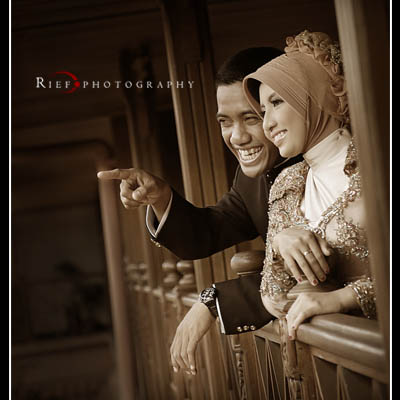




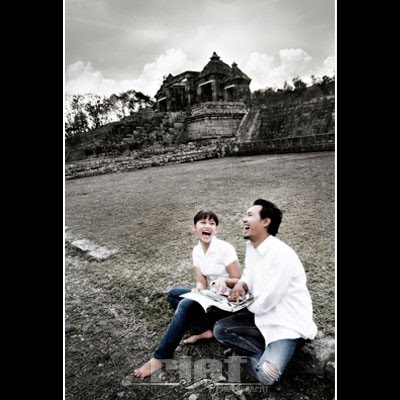

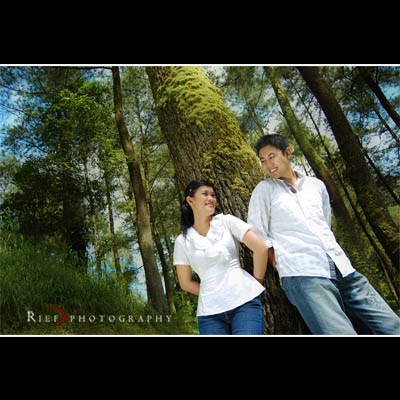

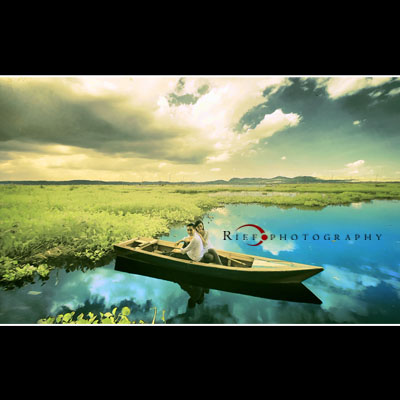
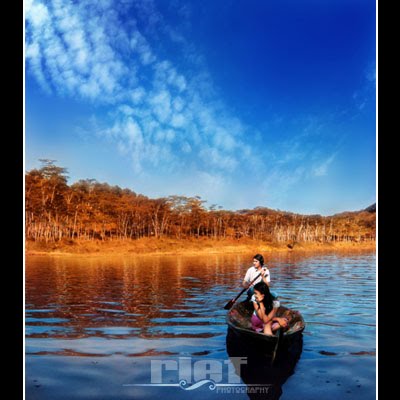

Tidak ada komentar:
Posting Komentar